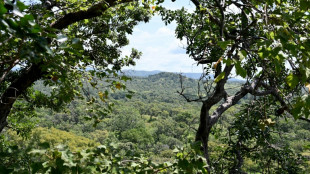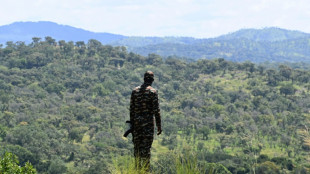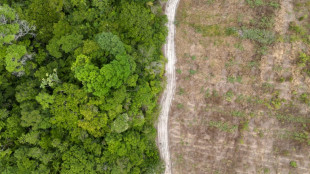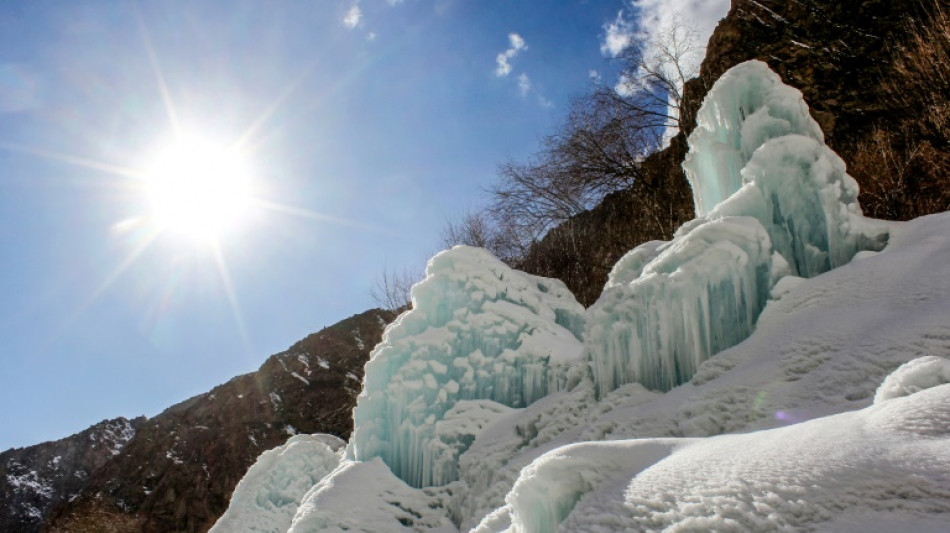
-
 Sixers suffer first loss as NBA Cup begins
Sixers suffer first loss as NBA Cup begins
-
China's Xi to meet South Korean leader, capping APEC summit

-
 Japan's Chiba leads after Skate Canada short program
Japan's Chiba leads after Skate Canada short program
-
Finland's crackdown on undocumented migrants sparks fear
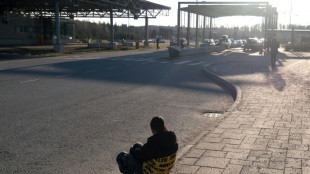
-
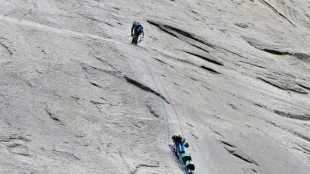 Climbers test limits at Yosemite, short-staffed by US shutdown
Climbers test limits at Yosemite, short-staffed by US shutdown
-
Gstaad gives O'Brien record 21st Breeders' Cup win

-
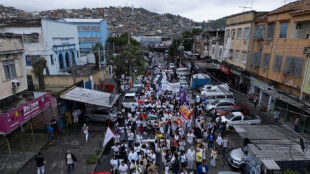 After the tears, anger on Rio's blood-stained streets
After the tears, anger on Rio's blood-stained streets
-
Sinner boosts number one bid in Paris, to face Zverev in semis

-
 Springer back in Toronto lineup as Blue Jays try to close out Dodgers
Springer back in Toronto lineup as Blue Jays try to close out Dodgers
-
Nationals make Butera MLB's youngest manager since 1972

-
 Guirassy lifts Dortmund past Augsburg ahead of Man City clash
Guirassy lifts Dortmund past Augsburg ahead of Man City clash
-
G7 says it's 'serious' about confronting China's critical mineral dominance
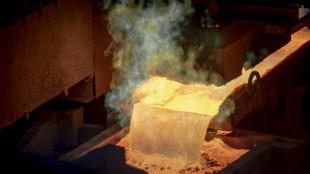
-
 NFL fines Ravens $100,000 over Jackson injury status report
NFL fines Ravens $100,000 over Jackson injury status report
-
NBA refs to start using headsets on Saturday

-
 Trump says Christians in Nigeria face 'existential threat'
Trump says Christians in Nigeria face 'existential threat'
-
French-Turkish actor Tcheky Karyo dies at 72

-
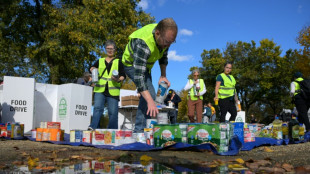 Food stamps, the bulwark against hunger for over 40 mn Americans
Food stamps, the bulwark against hunger for over 40 mn Americans
-
Trump keeps world guessing with shock nuclear test order

-
 Wall Street stocks rebound on Amazon, Apple earnings
Wall Street stocks rebound on Amazon, Apple earnings
-
US Fed official backed rate pause because inflation 'too high'

-
 Prayers and anthems: welcome to the Trump-era Kennedy Center
Prayers and anthems: welcome to the Trump-era Kennedy Center
-
Swiss central bank profits boosted by gold price surge
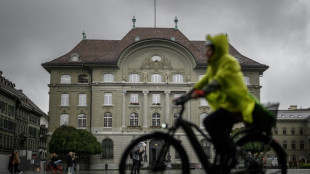
-
 Sinner beats Shelton to boost number one bid in Paris
Sinner beats Shelton to boost number one bid in Paris
-
French court jails Bulgarians for up to four years for Holocaust memorial defacement
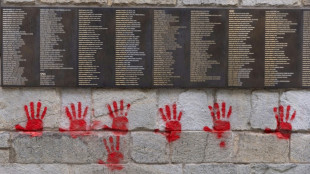
-
 Profits dip at ExxonMobil, Chevron on lower crude prices
Profits dip at ExxonMobil, Chevron on lower crude prices
-
Ashraf and Mirza skittle South Africa as Pakistan win 2nd T20

-
 2,000 trucks stuck in Belarus after Lithuania closes border: association
2,000 trucks stuck in Belarus after Lithuania closes border: association
-
French lawmakers reject wealth tax proposal in budget debate

-
 Premier League blames European expansion for lack of Boxing Day games
Premier League blames European expansion for lack of Boxing Day games
-
Bublik sets up Auger-Aliassime semi-final at Paris Masters

-
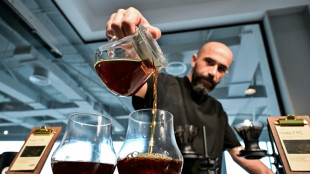 World's most expensive coffee goes on sale in Dubai at $1,000 a cup
World's most expensive coffee goes on sale in Dubai at $1,000 a cup
-
Trump stirs global tensions, confusion with nuclear test order

-
 Panic across US as health insurance costs set to surge
Panic across US as health insurance costs set to surge
-
Court eases ban on Russian lugers but Olympic hopes on thin ice

-
 England captain Itoje targets Autumn Nations clean sweep
England captain Itoje targets Autumn Nations clean sweep
-
Calmer Sabalenka sets sights on WTA Finals crown

-
 Spurs boosted by Romero return for Chelsea clash
Spurs boosted by Romero return for Chelsea clash
-
Sudan's RSF claims arrests as UN warns of 'horrendous' atrocities in Darfur

-
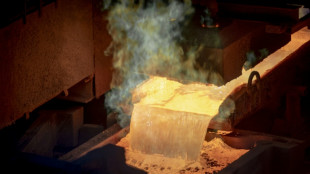 US says 'non-market' tactics needed to counter China's rare earth dominance
US says 'non-market' tactics needed to counter China's rare earth dominance
-
China sends youngest astronaut, mice to space station
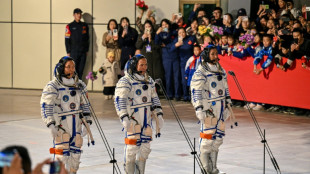
-
 From adored prince to outcast, Andrew's years-long fall from grace
From adored prince to outcast, Andrew's years-long fall from grace
-
Rodri return fuels Guardiola belief in Man City title challenge

-
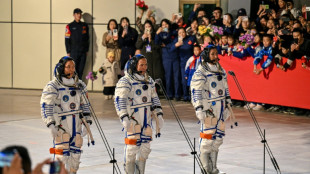 China holds send-off ceremony for space station astronauts
China holds send-off ceremony for space station astronauts
-
Barcelona to show off unfinished Camp Nou with public training session
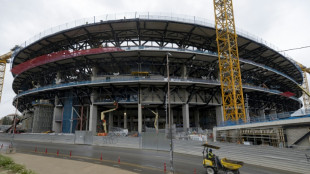
-
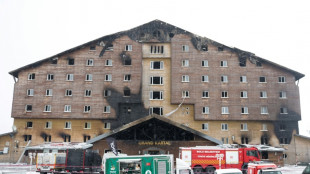 Turkish court jails 11 for life over deadly hotel inferno
Turkish court jails 11 for life over deadly hotel inferno
-
Auger-Aliassime ends Vacherot run to reach Paris Masters semis
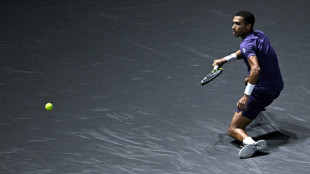
-
 Australia captain Wilson denies Wallabies use 'dangerous' breakdown tactics
Australia captain Wilson denies Wallabies use 'dangerous' breakdown tactics
-
'Populists can be beaten': Dutch centrist Jetten claims election win

-
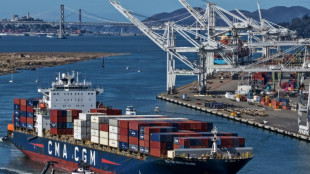 China's suspension of rare earth controls applies to EU: official
China's suspension of rare earth controls applies to EU: official
-
Italy complains about strong euro, urges ECB to cut rates
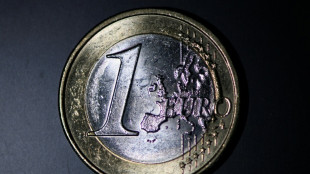

Artificial glaciers boost water supply in northern Pakistan
At the foot of Pakistan's impossibly high mountains whitened by frost all year round, farmers grappling with a lack of water have created their own ice towers.
Warmer winters as a result of climate change has reduced the snow fall and subsequent seasonal snowmelt that feeds the valleys of Gilgit-Baltistan, a remote region home to K2, the world's second-highest peak.
Farmers in the Skardu valley, at an altitude of up to 2,600 metres (8,200 feet) in the shadow of the Karakoram mountain range, searched online for help in how to irrigate their apple and apricot orchards.
"We discovered artificial glaciers on YouTube," Ghulam Haider Hashmi told AFP.
They watched the videos of Sonam Wangchuk, an environmental activist and engineer in the Indian region of Ladakh, less than 200 kilometres away across a heavily patrolled border, who developed the technique about 10 years ago.
Water is piped from streams into the village, and sprayed into the air during the freezing winter temperatures.
"The water must be propelled so that it freezes in the air when temperatures drop below zero, creating ice towers," said Zakir Hussain Zakir, a professor at the University of Baltistan.
The ice forms in the shape of cones that resemble Buddhist stupas, and act as a storage system -- steadily melting throughout spring when temperatures rise.
- 'Ice stupas' -
Gilgit-Baltistan has 13,000 glaciers -- more than any other country on Earth outside the polar regions.
Their beauty has made the region one of the country's top tourist destinations -- towering peaks loom over the Old Silk Road, still visible from a highway transporting tourists between cherry orchards, glaciers and ice-blue lakes.
Sher Muhammad, a specialist in the Hindu Kush-Himalayan mountain range that stretches from Afghanistan to Myanmar, however said most of the region's water supply comes from snow melt in spring, with a fraction from annual glacial melt in summers.
"From late October until early April, we were receiving heavy snowfall. But in the past few years, it's quite dry," Muhammad, a researcher at the International Centre for Integrated Mountain Development (ICIMOD), told AFP.
The first "ice stupas" in Gilgit-Baltistan were created in 2018.
Now, more than 20 villages make them every winter, and "more than 16,000 residents have access to water without having to build reservoirs or tanks", said Rashid-ud-Din, provincial head of GLOF-2, a UN-Pakistan plan to adapt to the effects of climate change.
Farmer Muhammad Raza told AFP that eight stupas were built in his village of Hussainabad this winter, trapping approximately 20 million litres of water in the ice.
"We no longer have water shortages during planting," he said, since the open-air reservoirs appeared on the slopes of the valley.
"Before, we had to wait for the glaciers to melt in June to get water, but the stupas saved our fields," said Ali Kazim, also a farmer in the valley.
- Harvest seasons multiply -
Before the stupas, "we planted our crops in May", said 26-year-old Bashir Ahmed who grows potatoes, wheat and barley in nearby Pari village which has also adopted the method.
And "we only had one growing season, whereas now we can plant two or three times" a year.
Temperatures in Pakistan rose twice as fast between 1981 and 2005 compared to the global average, putting the country on the front line of climate change impacts, including water scarcity.
Its 240 million inhabitants live in a territory that is 80 percent arid or semi-arid and depends on rivers and streams originating in neighbouring countries for more than three-quarters of its water.
Glaciers are melting rapidly in Pakistan and across the world, with a few exceptions including the Karakoram mountain range, increasing the risk of flooding and reducing water supply over the long term.
"Faced with climate change, there are neither rich nor poor, neither urban nor rural; the whole world has become vulnerable," said 24-year-old Yasir Parvi.
"In our village, with the ice stupas, we decided to take a chance."
H.Kuenzler--VB

